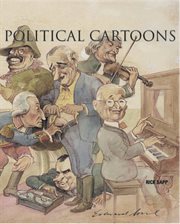Details
PUBLISHED
Made available through hoopla
DESCRIPTION
1 online resource
ISBN/ISSN
LANGUAGE
NOTES
It can be argued that political cartoons have existed as long as there have been people to lampoon and criticize, but the advent of the printing press, in particular the development of an industrial process in the 19th century, really allowed this manner of communication to flourish. Political cartoons were a critical element of communication in the American colonists' drive for independence from Britain. Both Benjamin Franklin and Paul Revere used them to build support for the early revolutionary cause. Since then, every U.S. war and the citizens' sentiments about it can be described by political cartooning. But it wasn't until the 20th century that the political cartoon came of age, riding the wave of widespread newspaper and magazine printing. Photography pushed the medium off the front page, however, and moved it to the editorial page. Political cartooning is either a dying occupation or a wide-open and growing field, depending on your point of view. It can also be a very dangerous endeavor for those of us who recall the Danish cartoonist Kurt Westergaard's portrayal of Mohammed with a bomb in his turban and the death threats from Muslim fundamentalists that followed and still plague him today. Political cartooning is either a dying occupation or a wide-open and growing field, depending on your point of view. It can also be a very dangerous endeavor for those of us who recall the Danish cartoonist Kurt Westergaard's portrayal of Mohammed with a bomb in his turban and the death threats from Muslim fundamentalists that followed and still plague him today. Today, the Internet has given political cartoons new life. They are more powerful than ever
Mode of access: World Wide Web







